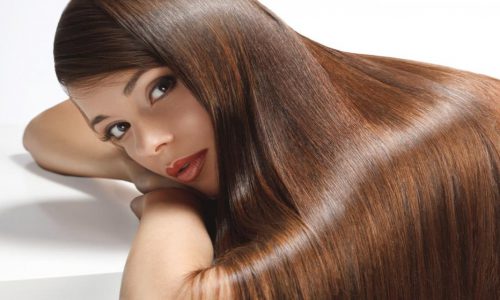It happens frequently that greasy hair, which seeks intensive moisturising, is being deprived of water continuously. This is a common mistake and, sadly, not the only one that we tend to make in greasy hair care. Before answering questions on how to condition oily hair and whether there are any home remedies to sort the problem out, let’s set out the reason why hair gets too greasy and how to recognize this ailment.
Why does hair get greasy?
Scalp, just like other skin parts, has numerous oil glands which role is to produce sebum. The amount of the sebum secreted depends on many factors such as food consumed regularly, hair care products applied and genes. Frequently, the greasy scalp problem is accompanied with oily face skin. If face skin type is normal but the hair is greasy, this might suggest improper scalp care. In most cases, hair gets too oily when scalp is too dry – this condition encourages oil glands to more excessive work. The situation gets even worse if you keep touching the scalp frequently during a day and transport germs from dirty hands and hats. Moreover, greasy hair might be the consequence of hormonal changes, for example during puberty period or menopause. Women to whom none of the above-mentioned issues applies, should consult a physician to find the core of the problem. If they take care of their hair appropriately but suffer from greasy hair, this probably mean that their hormonal balance is disturbed.
How to define greasy hair?
Oily hair shines in an unhealthy way, and frequently clumps. Such hair is flat, the strands cling one to another and the hair ends are dry. Its appearance is far from being neat when not washed every day. Additionally, if you press a clean finger to the scalp, you will notice an oily, sticky reaction that might, but not necessarily, be combined with the aroma of sebum.
How to condition oily hair?
In most cases women having greasy hair don’t do anything more than just wash the hair. They resign from moisturizing in the fear of even greater greasy hair problem. As a consequence, hair pursues self-hydration which is assisted by oily glands that produce more sebum than needed. How to take care of greasy scalp the right way? It should be washed with a herbal shampoo and hair ends should be replenished with water by applying a delicate conditioner or a leave-in conditioner (without applying the hair care products to the scalp). Additionally, it’s worth giving a go to oil hair treatment, especially with burdock or jojoba oil. Application of either oil suffices if done once a week. Then, the oil has to be removed with a delicate shampoo.
Ways of dealing with greasy hair
Firstly, in order to restore sebum balance, you have to limit hair washing. If you do this daily, you encourage the oily glands to produce sebum. Therefore, it’s a good idea to wash hair every other day, and when you notice the improvement, you can do this every three days. To make this transition less noticeable, you can use talc, dry shampoo or perennial plant hair rinse which reduce this unhealthy shine of roots. Basically, hairdos such as braids or bun will help you camouflage greasy hair.
Secondly, strongly cleansing SLS shampoos, which are known for making hair even more dry, should be replaced with herbal cosmetics mainly with black radish, nettle, aloe, burdock, perennial plant or mint extracts. The more neutral composition of the shampoo, the less it interferes with scalp. Furthermore, it’s crucial to stay hygienic and prevent germs from infecting the scalp. To do this, you should wash your combs and brushes at least once a month. You can use regular soap or a shampoo to clean your hair styling tools. Also, you should often change bed clothes and towels. Even heat styling tools, such as a flat iron, should be cleaned from time to time.
Greasy hair shouldn’t be combed more often than twice a day, in the morning and in the evening. Try not to use your dirty hands to add some touch-ups, don’t play with the hair nor try to add bounce at the roots by using the fingers because in this way you stimulate glands to produce more sebum. Moreover, greasy hair must be blow dried with cool air stream by holding the hairdryer in a 20 cm (8 in) distance from head. Also, oily hair should be rinsed with either lukewarm or cool water.
Home remedies to deal with greasy hair
- Lemon hair rinse for greasy hair
To prepare it you have to squeeze juice from a half of small lemon, combine with two spoons of vinegar and mix with 750 ml of warm water. Pour this lemon hair rinse over your strands as the last step of your regular hair washing. - Fennel hair rinse for greasy hair
This homemade cosmetic is created by filling up two mugs of fennel (one tea bag for one mug) with boiling water and keeping them under the lid for 15 minutes. Use this hair rinse when it cools down. - Herbal and vinegar infusion for greasy hair
Before beginning with preparing this hair rinse, choose the herb: chamomile, lavender, pot marigold, sage or mint. Put a teabag of selected herb into a bowl (alternatively, you can put there a tablespoon of the dried herb) and then pour boiling water. Keep under a lid for 20 minutes. Once it cools down, add a tablespoon of apple vinegar and apply after washing the hair. The vinegar can be replaced with cool water.



Leave a Reply